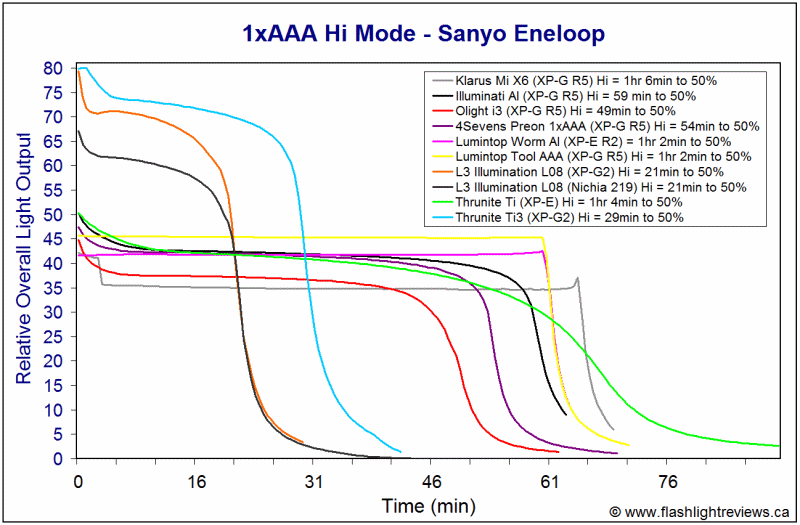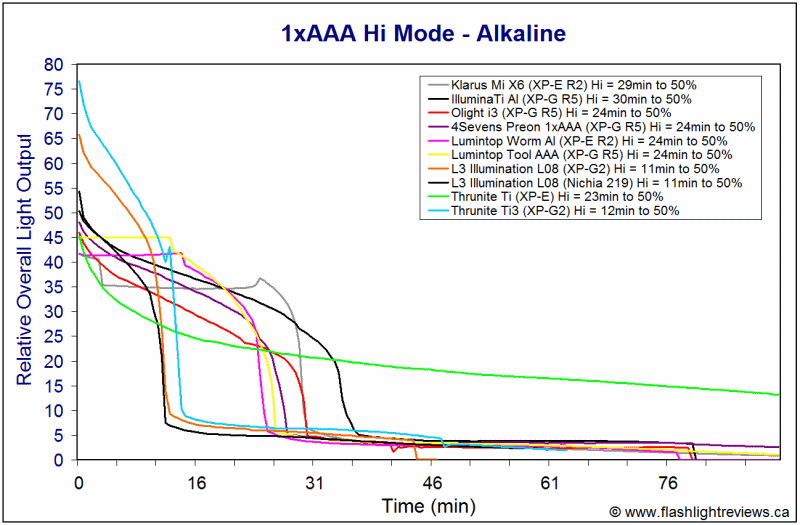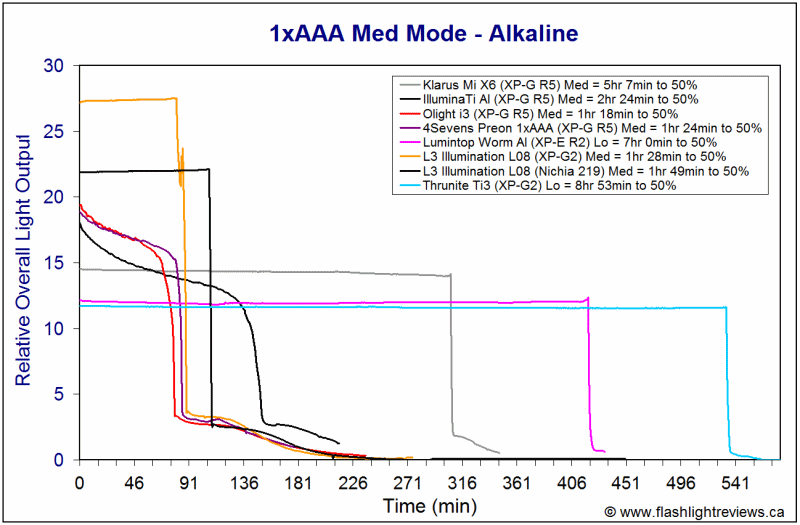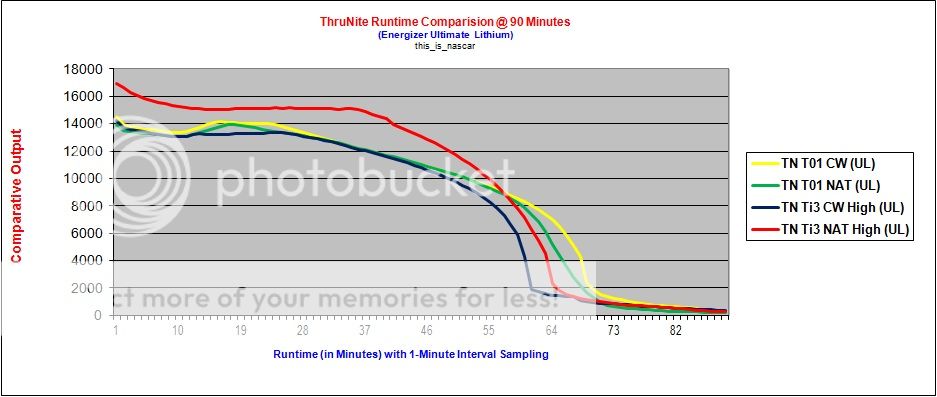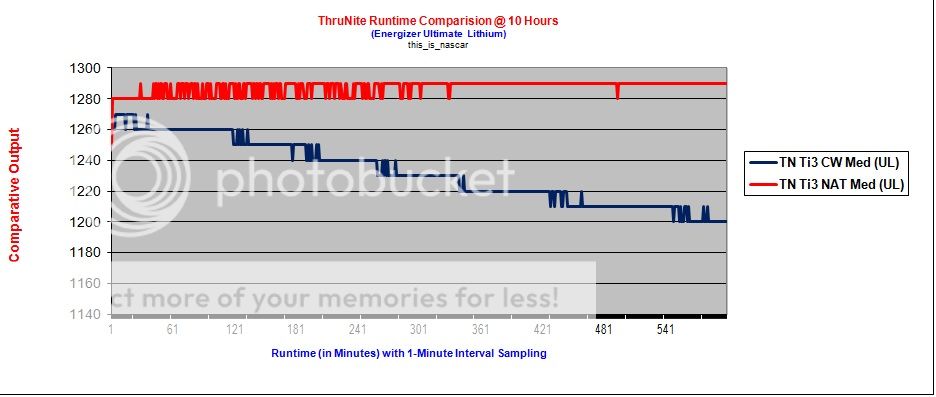this_is_nascar
Flashaholic
Recently returning from being away from this hobby for sometime, I'm finding that either the AAA cell chemistry has not kept up with the advances made in the LED and/or circuitry industry or the advances and capabilities of the LED has surpassed the capabilities of a single-AAA host.
Case in point. A couple of my recent purchases (accidentally) were of the single level ThruNite T01 in cool-white and neutral-white. Not even wanting to waste the time using an alkaline Duracell, I went right to the Energizer E2 Lithium cell. It's performance in high-output devices has proven itself to me time and time again.
Imagine my surprise after seeing these results.
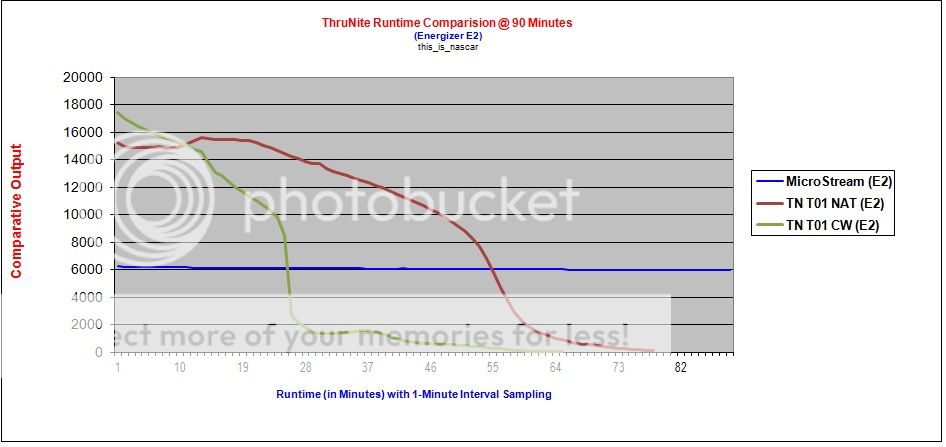
Case in point. A couple of my recent purchases (accidentally) were of the single level ThruNite T01 in cool-white and neutral-white. Not even wanting to waste the time using an alkaline Duracell, I went right to the Energizer E2 Lithium cell. It's performance in high-output devices has proven itself to me time and time again.
Imagine my surprise after seeing these results.



